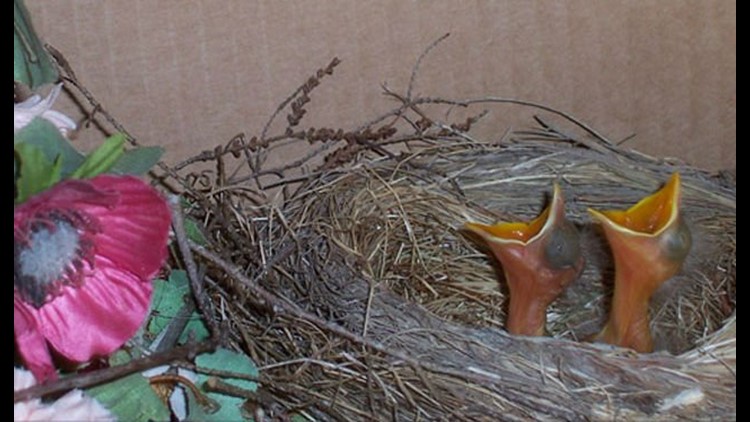They look so cute, clumsy, vulnerable and alone – but wildlife authorities say you should still leave baby animals and baby birds alone when you see them.
It is actually not uncommon to see individual (or entire litters of) baby racoons, rabbits, foxes or skunks near your home. It’s easy to see how people can be concerned when they spot a small bird on the ground, or a fawn that seems barely able to stand on its own.
Iowa Department of Natural Resources field offices take hundreds of calls every year from people concerned about possibly “orphaned” wildlife, especially in May and June, when the population of animal and bird babies is highest.
Beware; because those well-intentioned “rescues” are not only a bad idea, they are illegal according to the Iowa DNR.
“Most calls begin with something like, ‘We were walking in the park when…’ or ‘I looked out my window and saw…,'” said a statement from the Iowa DNR.
Well-meaning people see cute and cuddly-looking wildlife babies, and might think the animal is alone when it actually is not. It is normal for young mammals to be alone, where their mother has hidden them, during the daylight hours. Most wildlife babies will also venture out of the nest or den before they can care for themselves, but they are still getting care and feeding from their parents.
“(I)n reality, most of the wildlife reported to DNR field offices is not really orphaned at all. And, while the people who attempt to ‘rescue’ these babies have the best of intentions, they are in fact dooming the very creatures they intend to help,” the DNR statement said.
“Many wildlife babies die soon after capture from the stress of being handled, talked to, and placed into the unfamiliar surroundings of a slick-sided cardboard box. Should the animal have the misfortune of surviving this trauma, they often succumb more slowly to starvation from improper nourishment, pneumonia or other human-caused sicknesses,” the DNR said.
Their advice is to look, but don’t touch.
“Taking a good photo or two provides an even more lasting memory,” the DNR statement said, “But once you’ve done that, let well enough alone. Leave wildlife babies where they belong — in the wild.”



